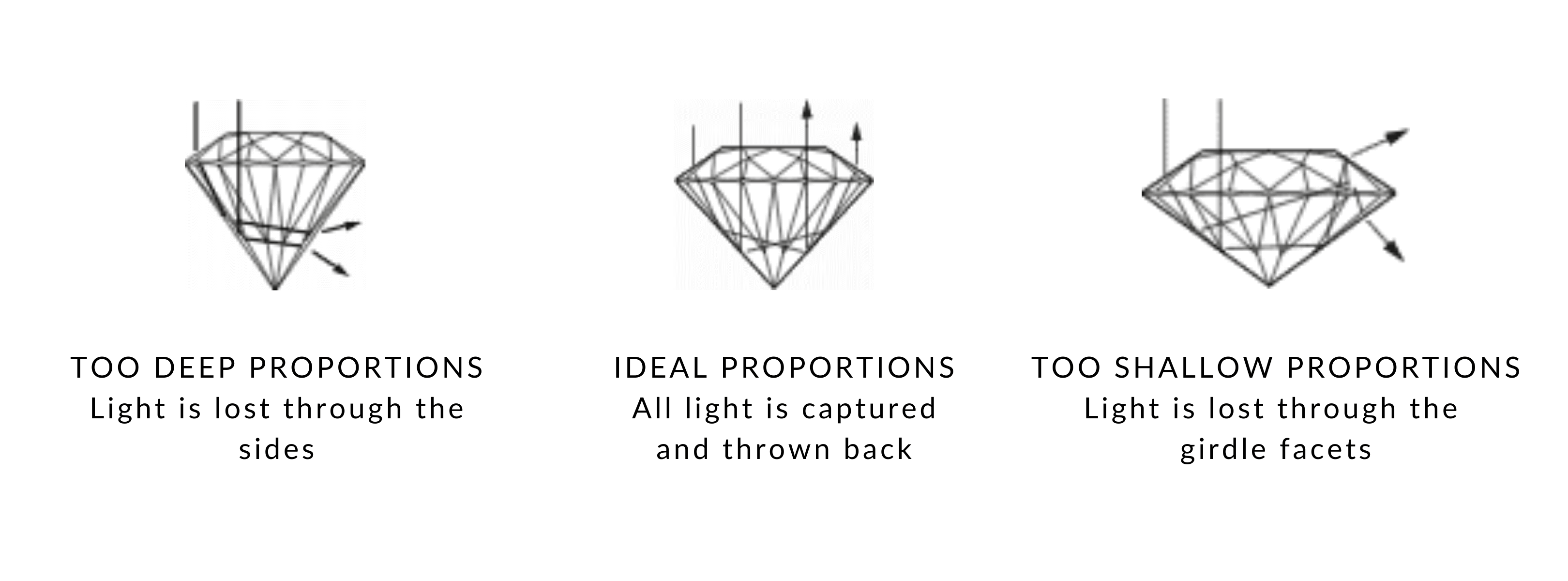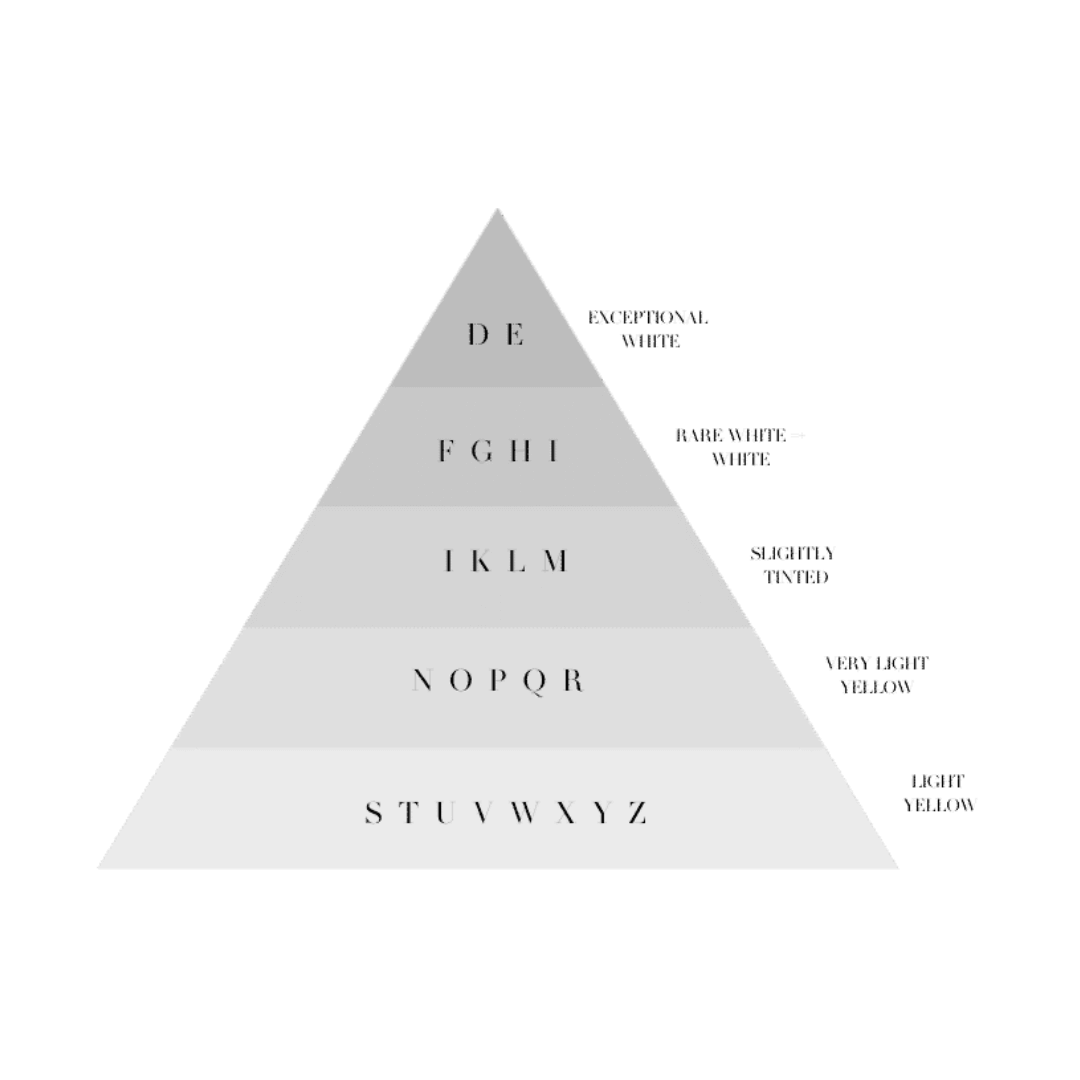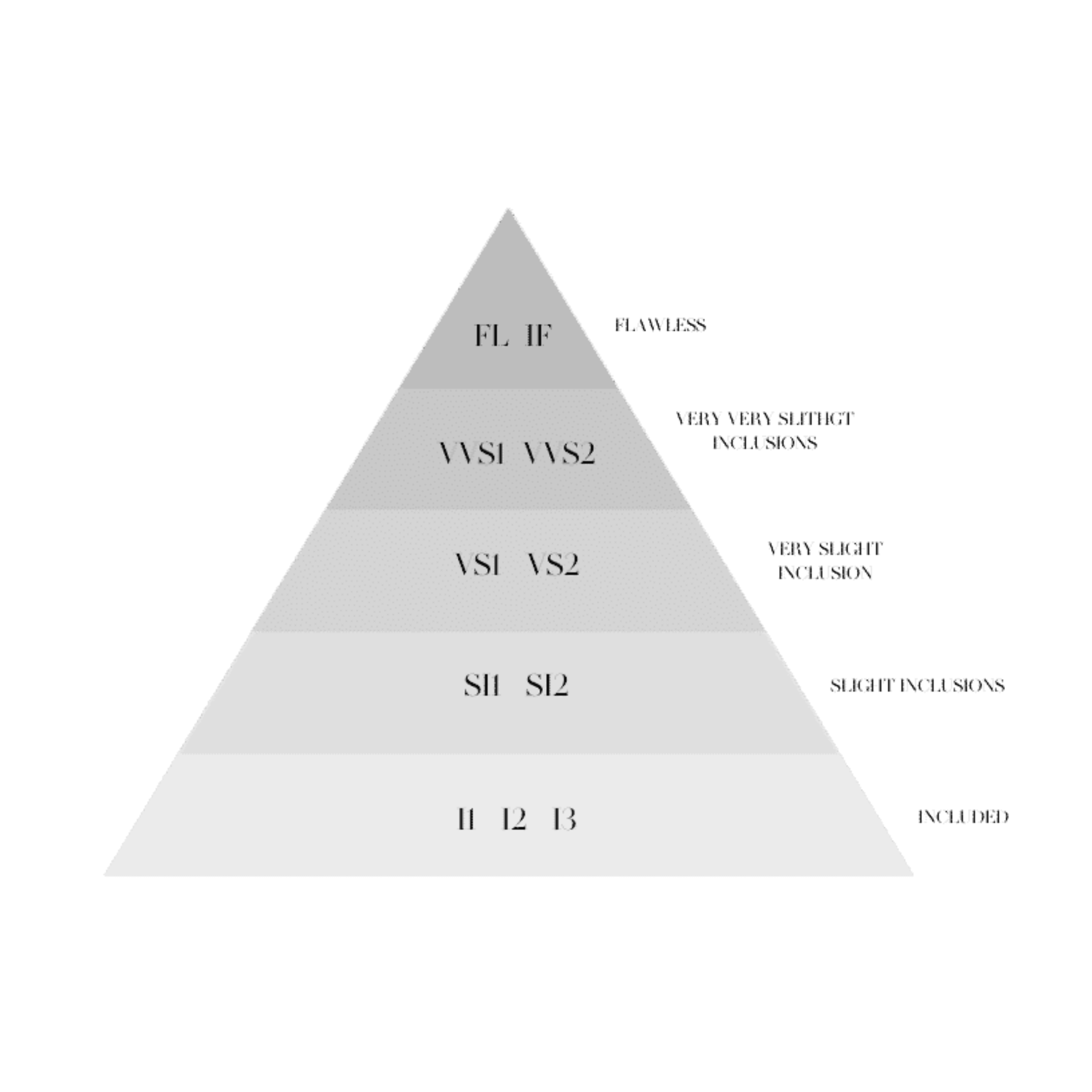
Cut
A round brilliant diamond is the only shape which receives a cut grade, this is determined by how well proportioned the diamond is. All fancy shape diamonds only receive a symmetry and polish grading.
A diamond’s polish grade is based on the exterior of the diamond, it needs to be completely smooth so light will reflect and sparkle.
Symmetry refers to the alignment of a diamond’s facets.
If the facets are accurately aligned, they will act like mirrors, capturing all the light and throwing it back so your diamond sparkles beautifully.

Carat
Carat is how the industry measures a diamond’s weight. Although related to size, two diamond shapes with the same carat weight can look entirely different.

Colour
Diamond colour actually refers to the ‘lack of colour’.
Diamond Collective does not regard colour as a quality indicator. Although colour distinction can be subtle and difficult for an untrained eye to see, we believe it is vital to understand as it can heavily impact the price.
As it can be especially difficult to detect the difference between a colourless and a near-colourless diamond, we recommend selecting a near colourless diamond to optimize price and carat size without sacrificing beauty.
Top tip: Colour is more visible in larger diamonds.

Clarity
Inclusions occur naturally during the forming process.
Every diamond is formed uniquely.
The level of visibility, placement and nature of inclusions can influence a diamond’s overall beauty.
For best value for money we recommend considering VS and SI1 clarity. When selected by a specialist the inclusions will only be visible under magnification.
Working slightly lower in clarity enables us to focus your price expectation on size and colour – the two more aesthetically noticeable qualities to the naked eye.


